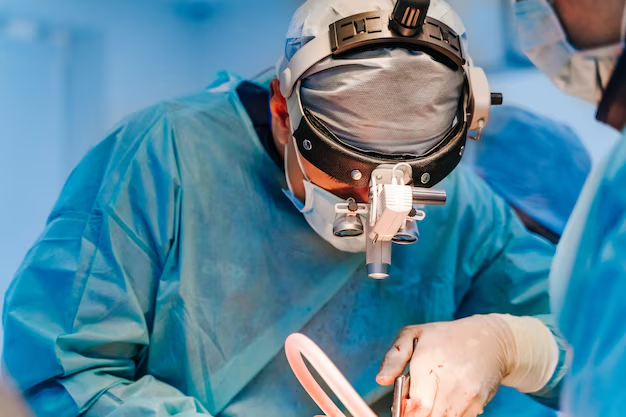Understanding Anesthesia Options for Cataract Surgery: What You Need to Know
If you're facing cataract surgery, you might find yourself anxious about the procedure and the types of anesthesia involved. The question often arises: Can you be put to sleep for cataract surgery? In this guide, we delve into this question and explore the different anesthesia options available, guiding you through what to expect.
The Basics of Cataract Surgery Anesthesia
When it comes to cataract surgery, many envision a daunting process requiring full sedation. In reality, this is often not the case. Cataract surgery typically uses local anesthesia, meaning you're awake but pain-free during the operation. This method involves numbing the eyes with drops or injections, ensuring you feel no discomfort.
Why General Anesthesia Is Rarely Used
While some surgeries necessitate putting patients to sleep, cataract surgery is generally less invasive. General anesthesia, which involves being completely unconscious, is usually not required. Here are key reasons why:
- Safety and Recovery: Local anesthesia reduces risks associated with general anesthesia, such as adverse reactions and prolonged recovery times.
- Effectiveness: Local anesthesia efficiently manages pain and discomfort during the short and precise procedure.
- Patient Factors: General anesthesia may be considered for individuals with certain medical conditions or those who experience anxiety making them unable to remain calm.
Exploring Anesthesia Types in Cataract Surgery
Local Anesthesia: The Preferred Choice
Most cataract surgeries rely on local anesthesia, with eye drops or injections to numb the sensation. This method allows you to stay awake and alert, minimizing risks and allowing for a swift recovery.
Sedation: Easing the Experience
In addition to local anesthesia, conscious sedation might be offered. This involves a mild sedative administered orally or intravenously, helping you relax without putting you to sleep. It’s common and ideal for patients who feel anxious about the procedure.
General Anesthesia: When It’s Considered
While rare, general anesthesia might be used in specific situations:
- Severe Anxiety: Patients unable to remain still due to severe anxiety may benefit.
- Complex Cases: In instances where surgery presents unforeseen complexities.
Preparing for the Procedure: What to Expect
When preparing for cataract surgery, understanding the anesthesia process helps alleviate fears. Here’s a guide on what to expect:
Pre-Operation Consultation: Discuss any health concerns or anxieties with your surgeon. This conversation allows personalized planning for anesthesia needs.
Day of Surgery: Arrive early, having followed any pre-surgery instructions, such as fasting or pausing specific medications.
During Surgery:
- Administering Anesthesia: Begin with numbing eye drops, possibly followed by a sedative.
- Operational Environment: The surgery room will be calm, and you'll be conscious but comfortable.
Post-Surgery:
- Recovery Room: A period in a recovery room helps monitor any immediate reactions.
- Discomfort Management: Eye shield and pain relievers may be provided for home use.
Benefits and Limitations of Anesthesia Choices
Choosing the right anesthesia option depends on various factors, including health status and personal comfort:
Local Anesthesia Benefits:
- Quick recovery and minimal side effects.
- Avoids risks associated with being put to sleep.
Sedation Advantages:
- Provides peace of mind for those nervous about being awake.
General Anesthesia Considerations:
- Addressing fear, it's not without added risks and recovery implications.
Consumer Tips & Key Takeaways 📝
Here's a quick summary of key insights from this guide:
- 📊 Local anesthesia, with or without sedation, is typical for cataract surgery.
- 😌 Sedation, while keeping you conscious, helps manage anxiety.
- **General anesthesia is a last resort, reserved for very specific cases.
- 👩⚕️ Talk to your surgeon about your medical history and anxiety levels to make the best anesthetic choice.
- 🔍 Understand what to expect before, during, and after surgery to lessen stress.
Understanding Long-Term Outcomes and Safety
The anesthesia used during cataract surgery is a crucial element in ensuring patient safety and comfort. Long-term outcomes are overwhelmingly positive, with most patients experiencing improved vision without significant side effects from the anesthetic process. By making informed decisions and communicating openly with healthcare providers, patients can rest assured they're in good hands.
Proactive Communication: The Importance of Dialogue
When facing any surgical procedure, clear communication with your medical team is vital. Address questions about anesthesia methods well ahead of the surgery date. Understand your options and express concerns so that tailored, satisfactory choices are made.
Wrapping It Up: Your Path to Clearer Vision
Embarking on the journey toward cataract surgery doesn't have to be daunting. Realizing the role anesthesia plays and how it affects the experience answers many preliminary questions. With an understanding of the procedure and confidence in your choices, your path to clearer vision becomes a seamless endeavor.
In summary, cataract surgery usually involves local anesthesia, while general anesthesia is reserved for special situations. Understanding these options and preparing mentally and physically ensures a confident and comfortable experience. Should uncertainties arise, never hesitate to reach out to your healthcare provider—your peace of mind is a top priority.
